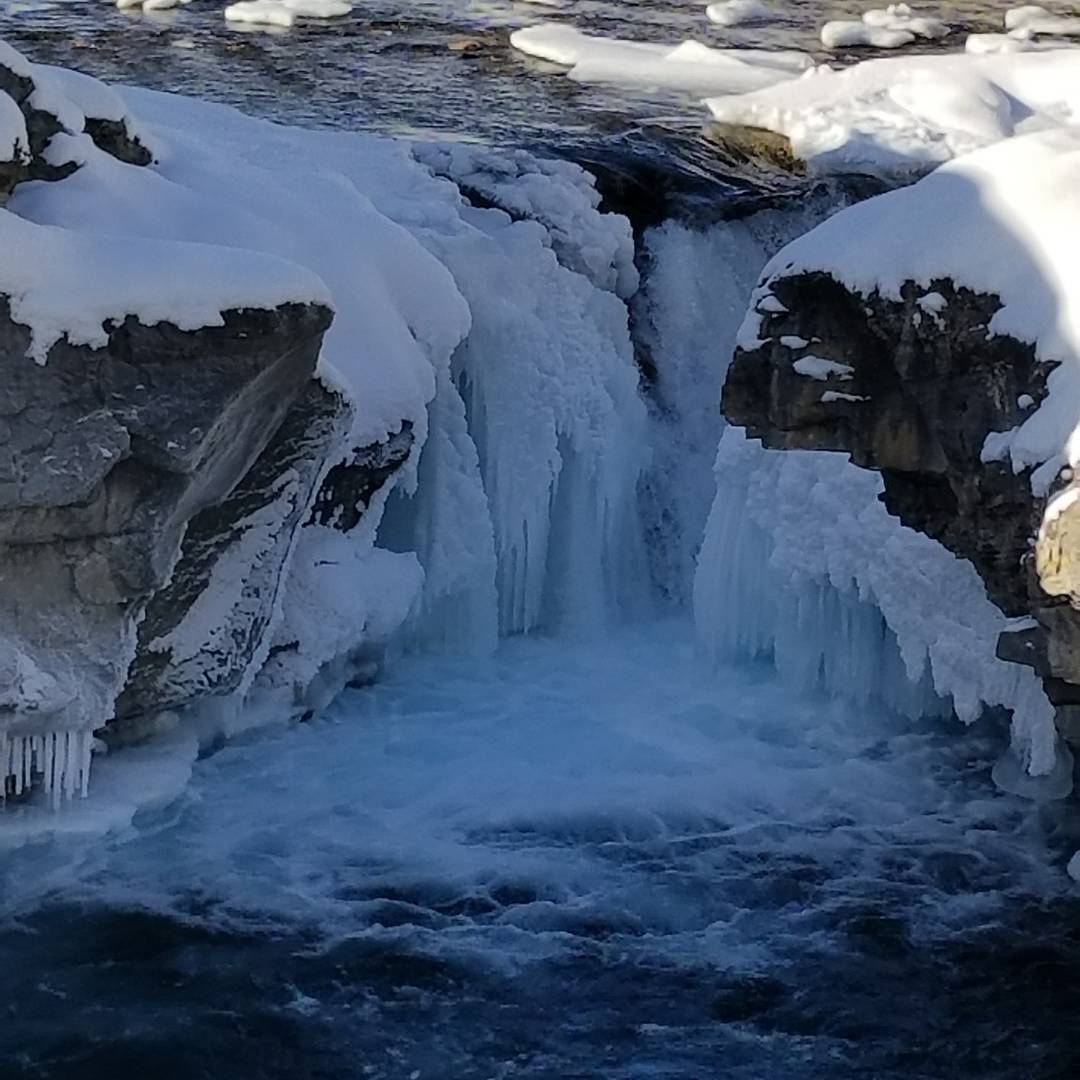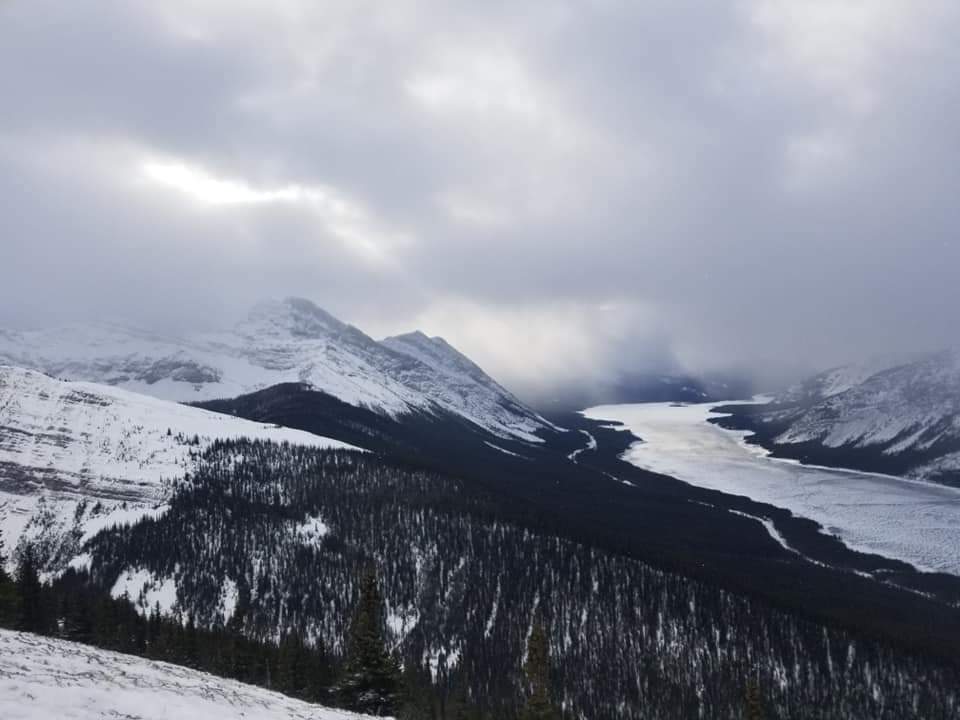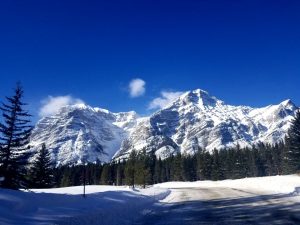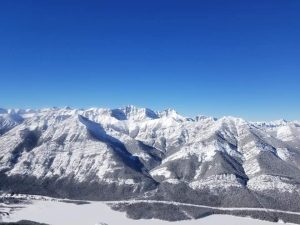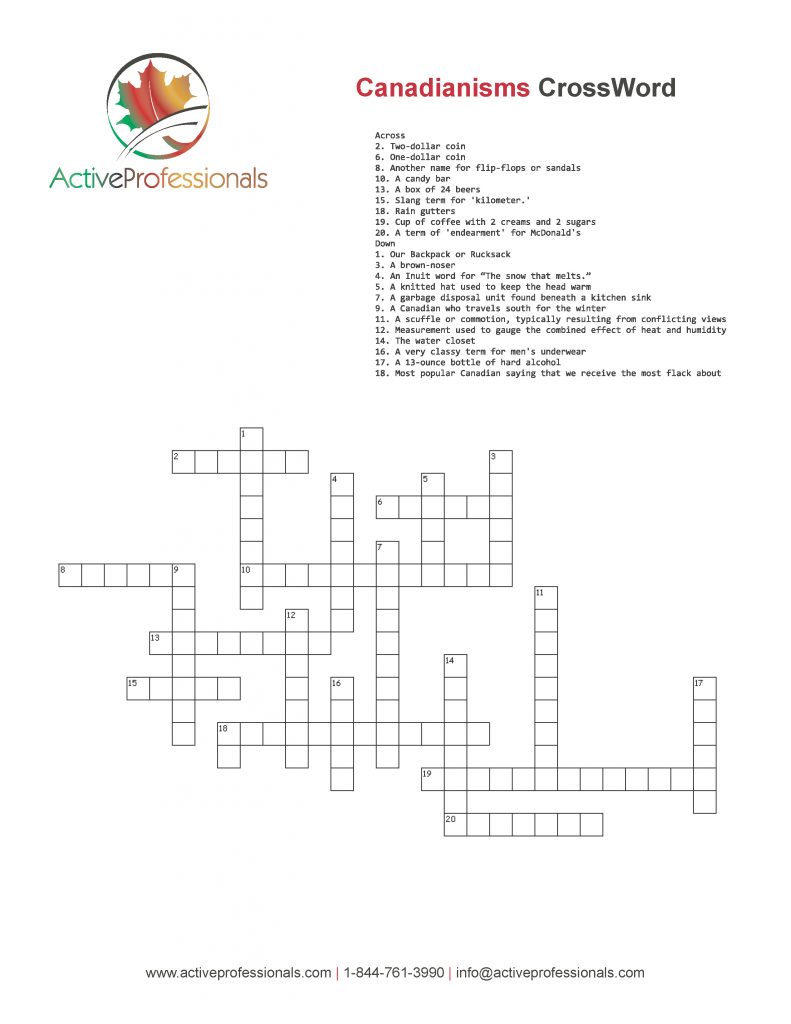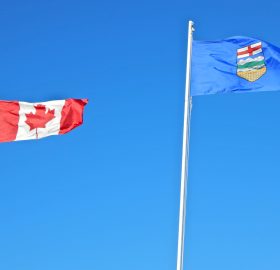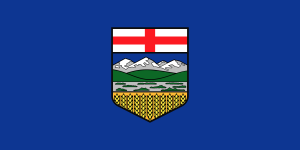How to Prepare for Your Next Job Interview
We have all experienced the nervousness that comes when you are going into a job interview. To help with your nerves, you probably would like to be more prepared than the other candidates. Here are seven tips to help you prepare for your next interview:
- Learn all about the company you are applying for. This will help you to stand out in your responses to the recruiter’s questions compared to less-prepared candidates. Research the company website, learn the company history, the position you are applying for and learn about your interviewer. It is also a good idea to go into your interview with some thoughtful questions of your own that you have formed from researching the company.
- Know your strengths and weaknesses. It’s important to emphasize what you’re good at, and minimize, but be truthful about, what you’re not. Double-check your skills and qualifications and compare it to the job requirement. This will help you identify which strengths you would like to highlight in your interview.
- Plan what to wear. A study found that 64% of bosses said clothes could be the deciding factor between two similar candidates. Dress appropriately to your interview and give yourself a competitive edge.
- Arrive Prepared. You should bring any items you may need during your interview with you in a professional bag, briefcase or folder. Some items you should have include copies of your resume, a pen or two, a notepad, your prepared questions, a list of references, contact information, and breath mints or gum (although you should spit this out before actually entering your interview.
- Pay attention to your non-verbal communication. Your body language says a lot, even when you’re not talking. It is important to be aware of this while you are in your interview and avoid gestures that give the wrong message. Start the interview with a firm handshake, make eye contact throughout the interview, sit up straight, and don’t sit with crossed across your chest as this can make you seem defensive and guarded.
- Follow-up after your interview. Send the interviewer a personalized thank you letter or email a couple of hours after your interview. The follow-up should express your interest in the position and include specific notes from the interview. This will keep you top of mind for the interviewer as well as show you appreciate the time and effort they put into considering you as a candidate.
By integrating these simple tips into your interview preparation you can ensure you stand out against the competition. Good luck with your interview!
Kicking-Off Your Resume: Three Common Types
It’s time to kick-off your Canadian job search and you need to update your resume for success. There are several basic resume types you can use to apply for job openings; a chronological, functional or hybrid. Each type has its own benefits, so how do you decide which is best? Here we will explain each type to help you make this decision and get started on your resume writing process.
Chronological Resume
This format is based on your professional timeline and is organized by the positions you have held listed from the most recent position to the oldest. Under each position listed, you would include the duties you performed as well as any major accomplishments that occurred while you were in each position. A chronological resume is great for someone who has had a career in a single field and is looking to get a position in the same field.
Functional Resume
This format is skill-based. It is organized by skills that you gained in your previous work relevant to the position you are currently applying for. Functional is best if you recently graduated, have any major time gaps in employment, or are changing careers.
Hybrid (Combination) Resume
This format is a combination of chronological and functional. The chronological is maintained, but this format highlights skills and accomplishments just as much as it highlights professional experience.
Now, with the knowledge you have gained you are ready to choose the best resume type for the job opening and your experience, skills, and achievements!
Get to Know the Alberta Opportunity Stream
The Alberta Opportunity Stream (AOS) is a pathway to permanent residence in Canada for migrants working in Alberta and international graduates who have completed their studies at an approved Alberta post-secondary institution.
If you’re interested in the AOS, there are a number of eligibility requirements you must meet in the following categories’
- Residency status and work permit
- Occupation
- Language
- Education
- Work experience
Each category has specific requirements that applicants must be met at the time your application is postmarked and at the time the Alberta Immigrant Nominee Program (AINP) assesses your application. Here are some of the details you should know before applying.
Residency Status and Work Permit Requirements
You must have a valid work permit for an eligible occupation to apply for AOS. Valid work permits are based on one of the following:
- a positive Labour Market Impact Assessment (LMIA)
- an LMIA exemption for workers based on one of the following exemptions as determined by Immigration, Refugees and Citizenship Canada (IRCC):
- international trade agreements
- workers transferred within a company
- International Experience Canada
- Mobilité Francophone
- Post-Graduation Work Permit (PGWP) holder
Post-Graduation Work Permit holders must also meet additional education and occupation requirements:
- Your current occupation must be related to your field of study in Alberta.
- If you are admitted and enrolled in your Alberta credential program before April 1, 2019, your credential must be issued by an Alberta Advanced Education approved Alberta public and private post-secondary institution and must be one of the following Alberta Advanced Education approved credentials:
- certificate or post-graduate certificate (minimum one year in length)
- diploma program (minimum 2 years in length)
- undergraduate bachelor’s degree
- graduate-level degree
- graduate-level certificate
- graduate-level diploma
Ineligible applicants
The following people cannot apply for the Alberta Opportunity Stream:
- Refugee claimants or individuals involved in a federal appeal or removal process.
- Temporary residents living or working in a province or territory of Canada other than Alberta.
- Migrants living or working in Canada who do not have valid temporary resident status.
Occupation requirements
To be considered for AOS, you must:
- work in an eligible occupation in Alberta
- work in an occupation that matches your previous work experience
If you are unsure whether your occupation is on this list contact our team of experienced RCICs for an initial consultation at info@activeprofessionals.com.
Language requirements
It is important that you are able to demonstrate you meet the following language test score in English or French:
- Canadian Benchmark (CLB) test score required a minimum of 4 for each English language skill, or
- Niveaux de compétence linguistique canadiens (NCLC) test score required a minimum of 4 for each French language skill
If you apply to the AINP under NOC code 3413 (Nurse aides, orderlies and patient service associates), the AINP requires a minimum language test score of:
- CLB of 7 for each English language skill, or
- NCLC of 7 for each French language skill
You must provide your official test results with your AINP application for one of the following language tests:
- Canadian English Language Proficiency Index Program (CELPIP) General Test
- International English Language Testing System (IELTS) General Training Test
- Test d’évaluation de français (TEF)
- Test de connaissance du français (TCF)
Official test results will need to be less than two years old when you submit your application. The AINP will not accept confirmation of registration to take a language test in place of a test result.
Check the federal guideline on CLB/NCLC equivalency for each of the tests.
Education requirements
Eligible applicants
At the time your application is postmarked you must have completed a minimum of high school education in your country of origin.
Post-Graduation Work Permit holders
Post-Graduation Work Permit holders must meet additional education and occupation requirements:
- Your current occupation must be related to your field of study in Alberta.
If you are admitted and enrolled in your Alberta credential program before April 1, 2019, your credential must be issued by an Alberta Advanced Education approved Alberta public and private post-secondary institution and must be one of the following Alberta Advanced Education approved credentials:
- certificate or post-graduate certificate (minimum one year in length)
- diploma program (minimum 2 years in length)
- undergraduate bachelor’s degree
- graduate-level degree
- graduate-level certificate
- graduate-level diploma
If you are admitted and enrolled in your Alberta credential program on or after April 1, 2019, your credential must be on the Alberta Opportunity Stream List of Alberta Advanced Education Approved Post-Secondary Credentials.
Work experience requirements
Your “current occupation” is the occupation you are working in at the time your application is postmarked to the AINP.
Your current occupation must also match your work experience at the time your application is postmarked and at the time the AINP assesses your application.
Qualifying work experience
At the time your application is postmarked you must have either:
- a minimum of 12 months full-time work experience in your current occupation in Alberta within the last 18 months; or
- a minimum of 24 months of full-time work experience in your current occupation in Canada and/or abroad within the last 30 months
- This work experience can be a combination of experience gained in Alberta, in Canada (outside Alberta) and/or abroad.
- Post-Graduation Work Permit holders require a minimum of 6 months of full-time work experience in your current occupation in Alberta within the last 18 months.
This occupation must be related to your field of study in Alberta of your Alberta Advanced Education approved credential at an Advanced Education approved Alberta public and private post-secondary institution.
If you are admitted and enrolled in your Alberta credential program on or after April 1, 2019, and you completed an Advanced Education-approved one-year post-graduate certificate, your occupation must also be related to your previous undergraduate or graduate field of study outside Canada.
Work experience in the qualifying period:
- must have been full-time, for a minimum of 30 hours a week
- must be for the same occupation as your current occupation
- must have been authorized by Immigration, Refugees and Citizenship Canada and with valid temporary resident status if completed in Alberta or Canada
- cannot have been gained while studying in Canada and doing co-op work placements or internships as part of a study program*
*There is an exception to this rule if you are a Post-Graduation Work Permit holder. Work experience completed during paid co-op work terms that were part of a program of study at an Alberta post-secondary institution can be used to meet the work experience criteria with the following conditions:
- the paid co-op work term was full-time (minimum 30 hours per week)
- the work experience is directly related to your current occupation
- the work experience was all gained in Alberta
You must have the required licensing, registration or certification to work in your current occupation in Alberta at the time your application is postmarked and at the time the AINP assesses your application for nomination
If you are working in a compulsory trade in Alberta you must have a valid Alberta Apprenticeship and Industry Trade (AIT) recognized trade certificate.
Eligible job offers
At the time your application is postmarked and at the time the AINP assesses your application for nomination, you must have a bona fide full-time job offer or employment contract from an Alberta employer to work in your current occupation in Alberta.
Your Alberta employer must be incorporated or registered by or under an act of the legislature of a province, territory, or the Parliament of Canada and operating as a business that has an established production capability, plant or place of business in Alberta.
Your job offer or employment contract must be signed by you and your Alberta employer and must offer:
- continuous paid work
- full-time work, defined as a minimum of 30 hours/week
- employment for 12 months or more
- work in your current occupation
- wages and benefits that meet provincial minimum wage and:
- meet or exceed the requirements set out in your LMIA, or
- if you are LMIA exempt, meet or exceed minimum the starting wage for your occupation across all industries in Alberta as set out on the Alis website
- work for an eligible AINP occupation for which you have a work permit that meets AINP work permit requirements
You must meet the terms agreed to in your job offer or employment contract at the time of application and assessment.
Ineligible applicants
The following individuals are not eligible, even if they have a job offer to work 30 hours a week or more in a 12-month period:
- part-time or casual employees, regardless of their working hours
- independent contractors, business owners or temporary agency workers, including individuals listed as Directors, Shareholders or Agents of the Alberta employer on the Corporate Registry System (CORES)
- employees who work in Alberta in a place of employment that is not zoned for commercial or industrial operations, such as a home-based business
- employees who do not work on premises in Alberta, such as those who work in a “virtual” location or serve the employer by telecommuting from a location outside Alberta
Learn How to Write a Canadian Style Resume
You might be wondering why, after sending so many resumes, you have not received a ton of responses yet. As a new immigrant to Canada there are a number of potential differences between the way you are used to writing a resume and the Canadian expectations. Learn these Canadian resume tips to strengthen your job search and improve upon your most important marketing tool in the interview process.
- Keep it short and concise. In Canada, most people have a resume that is a maximum of two pages long. Keep it to one page if are a recent graduate or do not have a lot of experience.
- Include your contact information for the potential employer to reach you. Provide information such as a phone number, email address and mailing address. Don’t attach a photo or any personal information including gender, marital status, or religion.
- Change your resume for each job you apply for. It is important to only include skills and experience relevant to the position such as the proper name of previous companies, where the business was located, and the title of the job that you had and a brief description of the position. Also, include any volunteer work you have done. Do not include personal interest and hobbies unless they are relevant to the position
- Ensure your resume format style is consistent. You should avoid long paragraphs and small fonts, 12 point font is standard. Use an easily readable font and make sure that only one font is used throughout. Ensure your resume format style is consistent.
- Have an up-to-date online resume. LinkedIn is a professional online platform that is frequently used in Canada for networking and the job search process. Many employers’ look-up job applicants on LinkedIn as well as other social media sites like Facebook and Twitter so make sure they are up-to-date and match the professional image you would like to portray.
- Finally, it is always a good idea to have your resume proofread by another person who is fluent in the language for typos, proper grammar, and completeness.
Once you apply these tips, you can start to focus on the interview preparation process. Happy job hunting!
Hidden Gems in Southern Alberta
Regardless of where you reside in Alberta, you can head in any direction and soon find several of Alberta’s jaw-dropping scenes. If you don’t want to spend a lot of money, other than the price of gas, there are numerous gems for you to discover and enjoy.
Glenbow Ranch
Just a short distance from Calgary head west on the 1A Highway and visit the Glenbow Ranch Provincial Park. It is a working ranch that has several paved trails which ideal for biking and hiking. The park offers spectacular views of the Rocky Mountains and the Bow River. Top the day off with a cool ice cream cone from the world renown MacKay’s Ice Cream in Cochrane, just minutes away from the park.
Bragg Creek
Another location just a short distance west of Calgary is Bragg Creek, located in the heart of the foothills. It is ideal for exploring and hiking. Just west of the hamlet is where the confluence of the Elbow River and the Bow River meet. Check out Elbow Falls Provincial Recreation Area, Forget Me Not Pond, or Mclean Creek Recreation Area. They are ideal locations for enjoying a family picnic and hiking.
If you are planning a longer trek continue west into the foothills and the Rocky Mountains and you will be rewarded with some spectacular views of the jagged sentinels and the turquoise blue lakes that are prevalent throughout the mountains. There is a good opportunity to view some of the wildlife such as bears, elk, mountain sheep, goats and deer. Although, if you do stop to take pictures, be very careful not to get too close to the animals.
Kananaskis
Kananaskis country has numerous trails to hike or places to sit beside a waterfall and enjoy a picnic. Head down Highway 40 that runs through the heart of Kananaskis. The highway is closed to vehicles south of Kananaskis Lakes from December 1 to June 15 each year. However, it is a favourite cycling route in May and during the first half of June, when the road is free of snow. Cyclists have the road to themselves during that period. If you can make it to the Highwood Pass, it is worth the work-out, because the view is spectacular. It is a 12.5 kilometers cycle from Upper Kananaskis Lake to the Pass, and it is mainly uphill getting there. The Highwood Pass is the highest paved highway in Canada (2206 m, or 7238 ft).
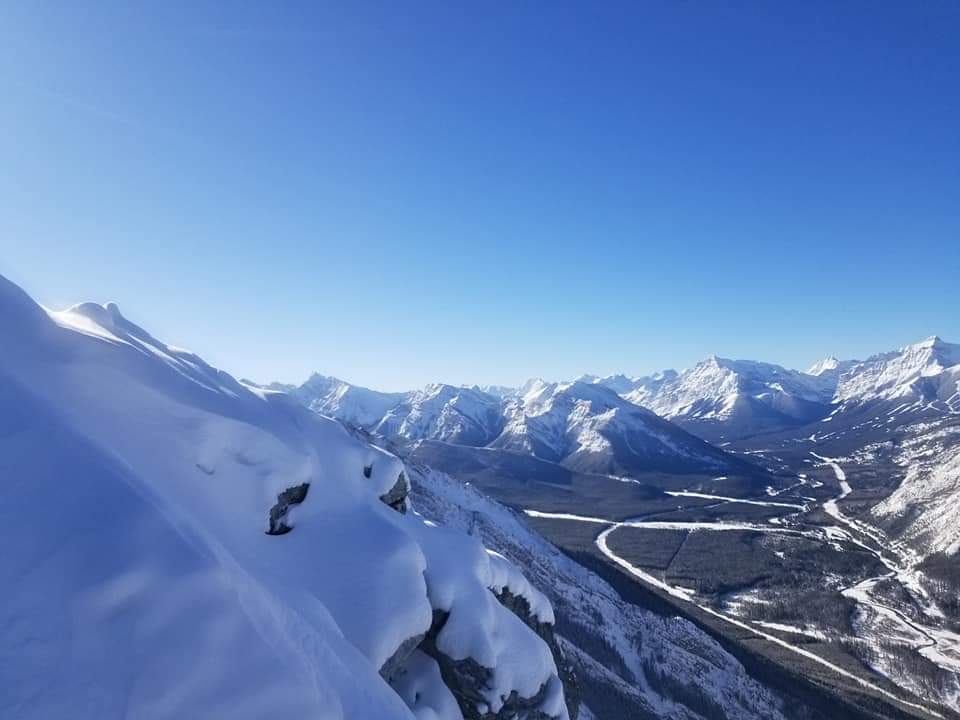
If cycling isn’t your thing, motor down the highway when it is open. Make it a day trip and exit the highway near Longview. From Longview cruise up Highway 22 and enjoy the small-town ambience of Black Diamond and Turner Valley, and then head east back to Calgary. The drive is about 300 kilometers total in a roundabout route that leads you north back to Calgary.
Cruise Cowboy Trail
If you don’t want to go into the mountains, but would rather view them from afar, drive along the Cowboy Trail. The Cowboy Trail, which is Highway 22 located west of Calgary, is 735 kilometers of paved blacktop that stretches from Cardston in the south to Mayerthorpe in the north. The southern drive offers amazing views of the foothills and the mountains and runs through little communities such as Turner Valley, Black Diamond, Longview, and Lundbreck.
Cardston
If you drive south to Cardston, make sure to check out the Reynolds Carriage Museum. 54 kilometers west of Cardston is the beautiful Waterton Lakes National Park which possesses much of Alberta’s natural wonders. The park offers numerous hiking trails and it is especially beautiful in late May and early June when all the wildflowers are in full bloom. The park commemorates the numerous plant species (over 1000) that are found in the park with The Wildflower Festival in June.
South on Highway 2
Another southern route to explore is Highway 2 south of Calgary which leads you through quaint little communities like Okotoks, Nanton, Claresholm and Fort McLeod. Nanton has several museums to peruse. The Bomber Command Museum of Canada is a must-see as well as the Canadian Grain Elevator Discovery Centre and the Museum of Miniatures. There is a fee for entrance to these museums.
A popular stop for tourists is the World Heritage Site Head-Smashed-In Buffalo Jump, just west of Highway 2. It is one of the world’s best-preserved buffalo jumps, and it has an interpretive centre. One can imagine the sound of thundering hooves as large herds of buffalo pound across the wind-swept prairies unsuspecting of their fate that awaited them. The view offers a spectacular vista of the prairies and the rolling foothills.
Highway 2 south ends at Fort MacLeod. There, drivers can go either east towards Lethbridge or west towards Pincher Creek and the Crowsnest Pass. The Crowsnest Pass cuts right through the mountains into British Columbia. You may want to stop in at the Frank Slide Interpretive Centre and view and learn about the mountain that tumbled down on the town of Frank in 1903. It is a solemn spectacle.
Prehistoric Sites
If you are looking to be transformed into another time when dinosaurs roamed the earth, then there are several areas in southern Alberta to view them. Writing on Stone Provincial Park near Milk River in the deep south of Alberta will take you there. Wind-swept hoodoos provide a landscape that is prehistoric. There is camping and hiking in the park as well as guided tours of pictographs and petroglyphs. Beware, there are rattlesnakes in the area.
More of the same prehistoric landscape can be viewed at Dinosaur Provincial Park near Brooks. Camping is available but if you choose to do so you will need to reserve a site. The most notable prehistoric looking landscape is in the Drumheller area, east of Calgary. Before you enter the town be sure to stop at Horsethief Canyon, which offers a stunning view of the valley below. It is worth stopping for a picture or two.
The town of Drumheller is all about dinosaurs, and in fact it has the tallest dinosaur in the world. The World’s Largest Dinosaur, a model of Tyrannosaurus Rex, has a viewing area in the dinosaur’s mouth. There is a price to enjoy that view. Many of Drumheller’s stores and parks feature dinosaur sculptures for public viewing. Just west of town is the world-famous Royal Tyrrell Museum. If you are planning to visit the museum, please check for times it is open and the cost of entrance. Be sure to stop by the Little Church which is on the way.
Instead of going west from Drumheller go east and stop at the Hoodoo Trail. A short hike through the mushroom-shaped hoodoos takes one back to another era a long time ago.
In the deep south east of Alberta, Cypress Hills looms above the bald prairie. It is like an oasis containing a diverse mix of forest, wetlands, grasslands, animals and birds. There is camping and a visitor’s centre, and lots of hiking trails. Some of the views will literally take your breath away.
South-East Alberta
If you make the trek to deep south-eastern Alberta, stop by the Medalta Museum in Medicine Hat where the company used to make clay pots and vases. Their kilns look like giant beehives growing out of the ground.
Red Rock Coulee, a natural area that some people regard as what Mars may look like, is approximately 50 kilometers south of Medicine Hat. Huge red boulders dot the landscape and it is a must-see experience. There aren’t any amenities in the coulee, but it is definitely worth drive if you are in the area.
Alberta has numerous towns and areas to explore, and boundless natural beauty, regardless of which way you head out on the road. Most towns have festivals, fairs and rodeos throughout the summer months and the information is just a click away on a computer or smart phone. It is ours to explore. Get out and enjoy it.
Crossword Puzzle: Canadianisms
How well do you know Canadian slang? This crossword puzzle will test your knowledge.
Alberta: the history and more
Alberta, the most westerly of Canada’s three Prairie Provinces, joined the Confederation of Canada and became a province on September 1, 1905; the same day that Saskatchewan joined the Confederation. Before then Alberta and Saskatchewan were considered part of the Northwest Territories.
Alberta was named after Princess Louise Caroline Alberta, the fourth daughter of Queen Victoria. At the time, Queen Victoria was the sovereign head of state for the British Empire.
Origins
Alberta was inhabited by First Nations’ indigenous peoples for 10,000 years before it was discovered by European explorers in the 1700’s. Europeans such as Peter Fidler, David Thomson and Alexander MacKenzie, were the first to establish European settlements and map the vast area. Alberta is the fourth largest province in area in Canada. The first European settlements in the province were Fort Chippewan and Fort Vermillion, established in 1788.
Alberta is also the fourth largest populous province in Canada with over 4.2 million people. While Calgary is the largest city in the province, Edmonton, the second largest city, is Alberta’s capital. The first premier of Alberta was Alexander C. Rutherford, who served from 1905-1910. Rachel Notley is the province’s current premier, elected in 2015.
Landscape
The province’s landscape is rich and diverse. There are Badlands near Drumheller in the east and Milk River in the south, and the prairie stretch north and west between them eventually giving way to the foothills that roll into the spire peaks of the Rocky Mountains.
Alberta is part of the Prairie Provinces, along with Saskatchewan and Manitoba. It is known for its big open spaces and big skies, providing beautiful sunsets. The ranches and farms reflect the open spaces as many of them are sprawling, huge spreads used for raising cattle and growing grains. The land is rich and fertile, if irrigated, where fields of wheat, canola, barley and oats thrive. Wheat is the largest agricultural export from the province, followed by canola, live cattle and Durum wheat. The main destination for these exports is the United States, Canada’s largest trading partner.
Industry
Oil
The main industry in Alberta is oil. Alberta’s oil is the third largest export commodity in the world, behind Venezuela and Saudi Arabia, and the province houses the third largest oil reserves in the world. Alberta is also the second largest exporter of natural gas in the world and is the world’s fourth largest producer of natural gas.
Much of Alberta’s crude oil is found in the Tar Sands in northern Alberta, although the first major crude oil discovery was found in Turner Valley, south of Calgary, in 1936.
Tourism
Tourism is another major industry in Alberta as visitors spent over $8 billion in the province in 2016. Over 35 million tourists visit the province annually and it is easy to understand why so many people visit the province, with its pristine lakes and mountains which provide cross-country and downhill skiing and fishing, as well as hiking and mountain climbing.
The Bow River is internationally renown for trout fishing. Other popular tourist destinations besides the Calgary Stampede and the other major cities include Banff, Jasper, Lake Louise and Waterton Park. If you are searching for less popular destinations check out Dry Island Buffalo Jump Provincial Park or Head-Smashed-In Buffalo Jump, a World Heritage Site. You may also want to visit Dinosaur Provincial Park near Brooks, or Drumheller and Milk River. It is like taking a trip back through time with their diverse landscapes that contain mushroom-shaped hoodoos, eroded by the wind and the weather over thousands of years. The Royal Tyrrell Museum near Drumheller has the largest collection of dinosaur bones and fossils in the world, and Drumheller has the tallest standing dinosaur in the world. It is worth a trip just to see it.
People
Some notable Albertans include:
- Tommy Chong (actor);
- Tricia Heifer (model/actress);
- Joni Mitchell (singers/songwriter);
- K.D. Lang (singers/songwriter); and
- Feist (singers/songwriter), to name a few.
Stay in Canada After You Graduate
Are you an international student who is about to complete your post-secondary education in Canada? Do you wish to stay in Canada after you graduate and obtain Canadian work experience? Then the Post-Graduation Work Permit program (PGWPP) may be what you’re looking for.
To work in Canada after you graduate, you need a work permit. The PGWPP allows students who have graduated from eligible Canadian designated learning institutions to obtain an open work permit and gain valuable Canadian work experience. An advantage of this program is that the work experience you gain may help you qualify for permanent residence.
How Long Will My Permit Be?
The duration of your post-graduation work permit (PGWP) will depend on the length of your study program. If your educational program was between eight months to two years, your PGWP may be valid for up to the same length as your study program. Alternatively, if the education program you completed was two or more years, then your PGWP may be issued for 3 years. If you complete more than one eligible program, you may be able to get a PGWP that combines the length of each program.
Programs that run for less then eight months are not eligible for the PGWPP. You also can’t get a PGWP if you already had one after completing an earlier program of study.
Am I Eligible?
On February 14, 2019, the Government of Canada extended the time to apply from 90 to 180 days, six months, after your designated learning institution issues your final marks confirming that the requirements to complete the program of study have been met.
You must also have maintained full-time status as a student in Canada during each semester of your study program (except your final semester, which can be part-time, or if you took a leave from studies) to be eligible.
Special cases:
If you’re in any of these groups, there are unique requirements to be aware of that may influence your eligibility.
- Accelerated programs
- Distance learning
- Leave from studies
- Transfers between schools
- Canadian study programs with an overseas component
- Flight school graduates
What Happens if I Don’t Qualify?
If you’re not eligible for a PGWP, you may still be able to work in Canada after you graduate. Contact us to have one of our Regulated Canadian Immigration Consultants help you determine the best program for your situation.
Interim Pathway for Caregivers – The Basics
The Interim Pathway for Caregivers is a dedicated pathway to permanent residence for qualifying in-home caregivers in effect March 4, 2019 until June 4, 2019. If you have work experience in Canada as a home child care provider or home support worker, you may be able to apply for permanent residence.
To be eligible to apply, you must have the required:
- status in Canada
- work experience
- language levels (CLB 5 in English or NLCL 5 in French)
- education (equal to a Canadian secondary school, also known as high school, diploma)
You must also plan to live outside the province of Quebec.
At the Time You Apply
To meet the status requirements when you apply, you must either have a valid work permit; have applied to extend your work permit and be waiting on a decision; or have applied to restore your status as a worker.
For your work experience in Canada to be eligible, you need to have worked as a home child care provider, a home support worker, or a combination of the two. You will also need to have gained this experience while working in the Temporary Foreign Worker Program.
You will also need to have at least 12 months of full-time work experience (at least 30 hours of paid work per week) since November 30, 2014. Breaks in employment (for example, periods where you weren’t working, on sick leave or parental leave) are allowed, however, any work experience you had while you were a full-time student doesn’t count.
It is important to note you’ll have to include documents to show proof of your work experience in your application.
If you’re interested in applying and believe you meet the above criteria, contact us. We would love to assist you with the application process.
A Brief History of Canada
Canada is relatively a new country compared to the long-established nations of the world in Africa, Asia and Europe. Although, Canadian history does have a rich pageantry in the short time since it has become an independent nation.
Origin
Canada’s name originates from the Huron/Iroquois name ‘Kanata’, which means ‘settlement’, or ‘village’. The first inhabitants on the land were indigenous people. The Vikings, Norsemen, also established a settlement in Newfoundland around 1001 AD, and explorer Leif Erikson and his crew were the first Europeans to touch the earth in North America, 500 years before Christopher Columbus arrived.
Exploration
The country was first explored mainly by French explorers such as Jacques Cartier, who in 1534 mapped the Gulf of St. Lawrence and claimed the land as the Colony of New France. Then Samuel de Champlain established the city of Quebec in 1608 and was named the ‘Father of New France’. Rich in natural resources and a booming fur trade, other nations, such as Great Britain, also wanted to claim Canada as its own.
Govern & Ruling
Prior to the birth of the nation, part of the land was under French rule. During the next 200 years, conflict ensued and in 1763 it was ceded to England after the French were defeated on the Plains of Abraham just outside of Quebec City, in the Seven Years War. Canada became a colony of England until 1867, when the new independent nation, the Dominion of Canada was established. Today, Canada is still a member of the British Commonwealth.
Under the guidance of Canada’s first Prime Minister, Sir John A. Macdonald, the Province of Canada (which consisted of Lower and Upper Canada, now the provinces of Ontario and Quebec), was joined by two other British colonies, New Brunswick and Nova Scotia, to form a confederation of provinces and a self-governing entity. On July 1, 1867, the Dominion of Canada was born.
There are now 10 provinces and three territories that comprise Canada, and each province and territory has its own capital. In 1870 the province of Manitoba and the Northwest Territories joined confederation. Using the promise of completing a railroad across Canada by the Canadian Government, British Columbia joined the Confederation in 1871. Prince Edward Island, Canada’s smallest province, was added to the nation in 1873. 25 years later, in 1898, the Yukon Territories became part of Canada, partially due to the Yukon Gold Rush that needed policing at the time. Alberta and Saskatchewan joined in 1905, and the last province to become part of Canada was Newfoundland and Labrador, in 1949. Nunavut, which was part of the Northwest Territories, entered Confederation in 1999.
There have been 22 Canadian Prime Ministers, from the first one, Sir John A. Macdonald to our current Prime Minister Justin Trudeau. William Lyon Mackenzie King has been the longest serving Prime Minister as he was the head of government for more than 21 years. John A. MacDonald, Wilfred Laurier and Pierre Trudeau all served as Prime Minister for more than 15 years each.
War and Conflict
Since becoming a nation Canada has been involved in 14 different wars and conflicts throughout the world, starting with the Fenian Raids in 1866-1871. As a colony of Great Britain, Canadians fought in the War of 1812 with the British against the United States and it was during the war, due to the American threat, that the city of Ottawa was made the capital of Canada.
Canada had a defining moment on the international stage in World War 1 in 1917, when four divisions in the Canadian Corps attacked Vimy Ridge during the Battle of Arras in France and overtook the Germans in four days. It was a huge victory but had a terrible cost as over 10,000 Canadians either lost their lives or were wounded in the battle. It was the first time in history that Canada attacked another nation as one military unit.
Canada also served and played a big role in the Second World War, declaring war on Germany a week after the British declared war on the axis nations. The nation participated in the Korean War and present day it is battling ISIS, along with numerous other countries.
Despite being involved in numerous wars and conflicts, Canada is viewed as a peacekeeping nation, partially due to the work of Canadian diplomat and former Prime Minister Lester B. Pearson. In 1957 Pearson won the Nobel Peace Prize for his involvement in solving the Suez Crisis, convincing Britain and France to depart from Egypt. He created the United Nations Emergency Force, which is the modern concept used at present for peacekeeping.
Want to learn more about Canada?





